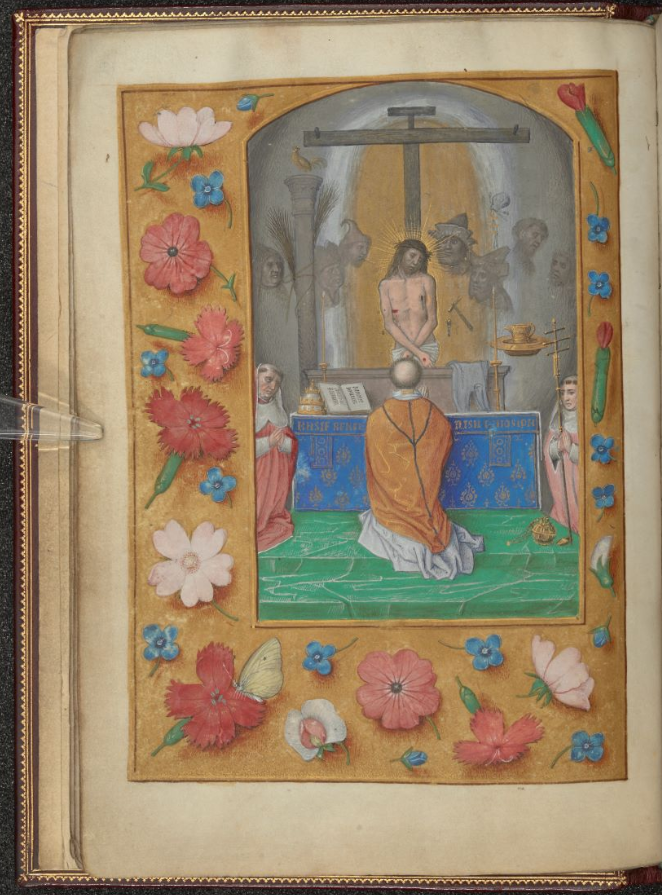Now that the Morgan Library MS block is complete for now, I've added a British book, one with quite an impressive history, British Library Add MS 50001. This use of Sarum book was owned by Queen Elizabeth, wife of Henry VII, and is actually inscribed to her on f.22r, "Elysabeth y[e] queene". The manuscript is a bit of a mess, it was rebound by the BL recently and digitized un the unbound state.
The calendar is very complicated. There are many of the liturgical notes in the margins (the Keys of Easter, extremities of Advent, etc) and the Zodiac dates. These are in blue ink, which is not elsewhere used in the calendar, excluding a single saint in August, until December, when they appear frequently, apparently used as a middle rank. Many of the usual "Henry VIII" editorials are visible, 'pp' or 'ppe' erased and the feasts of Thomas Becket (dec 29th and July 7), struck through entirely. The most interesting things about the calendar, however, are the mistakes. In the month of August(see f.4v below), all of the entries in black ink, up to St. Rufus on the 27th are one day too early, however the red entries are accurate. This suggests a phased approach to the scribe, with all of the black entries writted apart from the red ones, and perhaps that the black ones were done first.
And on a project note, this is the 100th Book of Hours to be entered in the DB!
(DB Id: 186)
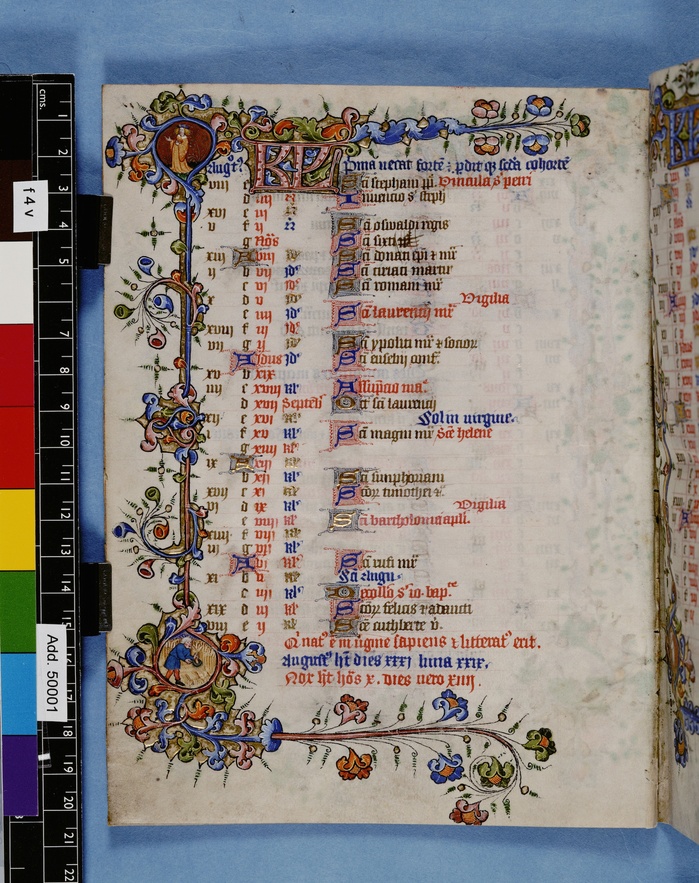
(Taking a break from the Morgan Library) Houghton Library Richardson 34 is an English book, use of Sarum, from the late 15th century. The calendar has some interestingly English saints, like Swithun and Oswald, and the usual Reformation edits, all of the "pape" notations and reference to Thomas Becket were erased and then re-added in a much later hand. St. Evaristus, who was a pope in the first century, and St. Hyginius (See f.1r below), pope in the second, were also added in that same later hand, though there's no evidence they there earlier. Otherwise the calendar is exceedingly accurate and has many saints added alongside the larger feasts, such as St. Hillary alongside the Epiphany on January 6 (see f.1r below)
(DB ID: 190)
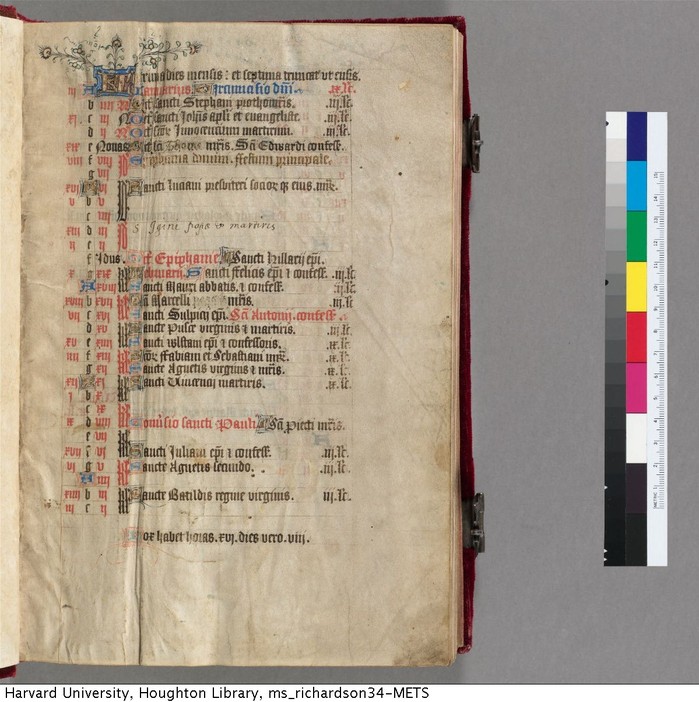
Taking a break from the Italian books, Morgan Library M.700, the Du Bois Hours, is a massive british Book of Hours, use of Sarum, dated to 1325-1330. It starts with a couple of full page illuminations, including a last-judgement, and then the calendar starts on f.5r, one side per month. It has most of the usual english saints and a couple of later additions in a regular, though difficult to parse, secretary hand. Oddly there is no title material for the months, no KL, no verses, not even the name of the month -- apart from it next to the Kalends for the 1st.
(DB ID: 79)
B.11.7 from Trinity College, Cambridge, is a fascinating late 14th C Book, use unknown, but probably Sarum. It is both the most precise and most accurate calendar transcribed to date. Saints are listed with ALL formal titles, as many as 3 per saint (see St. Augustine, Bishop, Confessor and Doctor on August 28th below), and every saint listed is on an attested date. Dates also always give specific saint info, i.e. Translation or "St Thomas of Hereford". The missing information is that few vigils, particularly on the first months of the year, are listed.
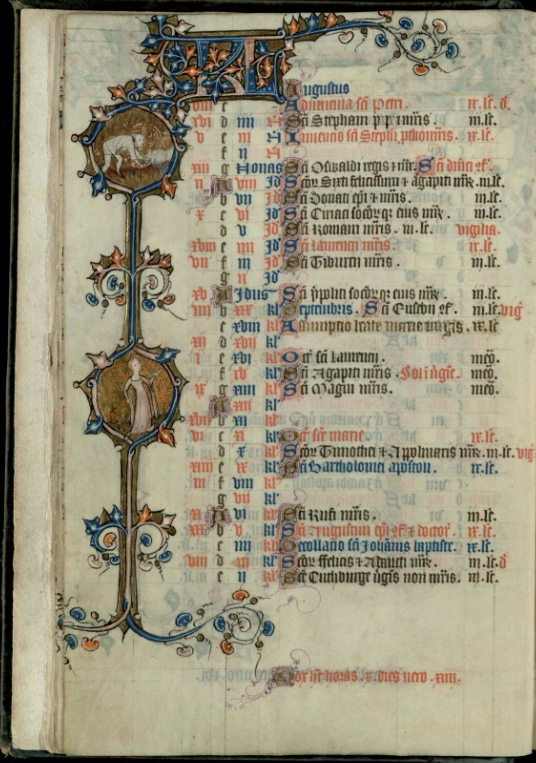
British Library Royal MS 2 A XVIII is a lovely Sarum use book, and the most entertainingly Tudor book possible. In addition to all of the relevant English saints, Edward the Confessor, Cuthbert and Etheldreda, there is the erasure of ALL references to Thomas Becket (see his Octave on f.28r) and even the title 'pape' has been removed where possible. The margins are filled with later notes about the goings-on with the royal household: "her decessed queene katerine", and "this day king harry the viith wedded the queen Elisabeth..."
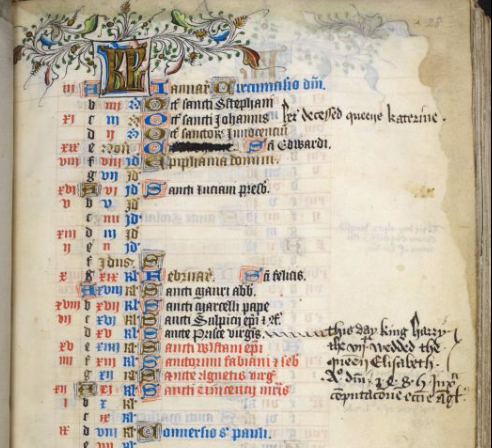
The Hastings Hours, or MS Add 54782, is a Use of Sarum book held by the British Library. Though the calendar is somewhat undistinguished, some attribute the decoration scheme to Alexander Bening, father of the great 16th Century painter Simon. Though use of Sarum for th British market, it was made in Flanders and the calendar has not yet been localized. The Mass of St. Gregory, with it's illusionistic borders and halucinatory arma christi, from f.18v is reproduced below
